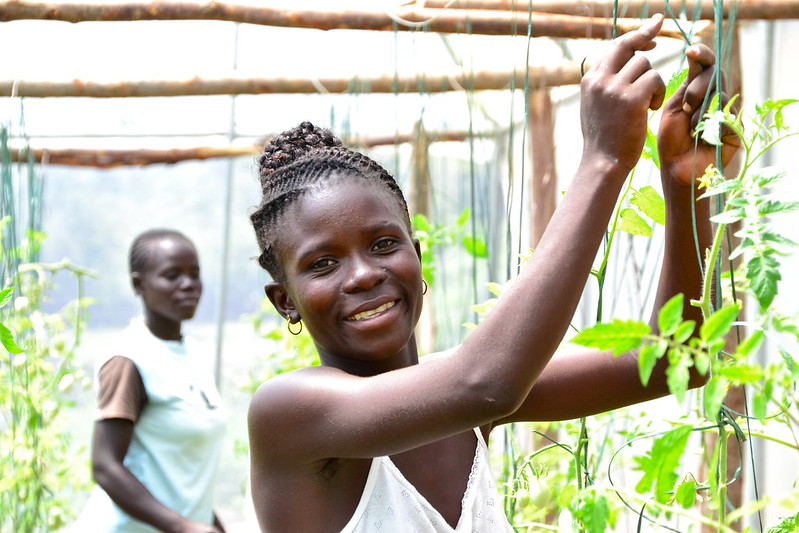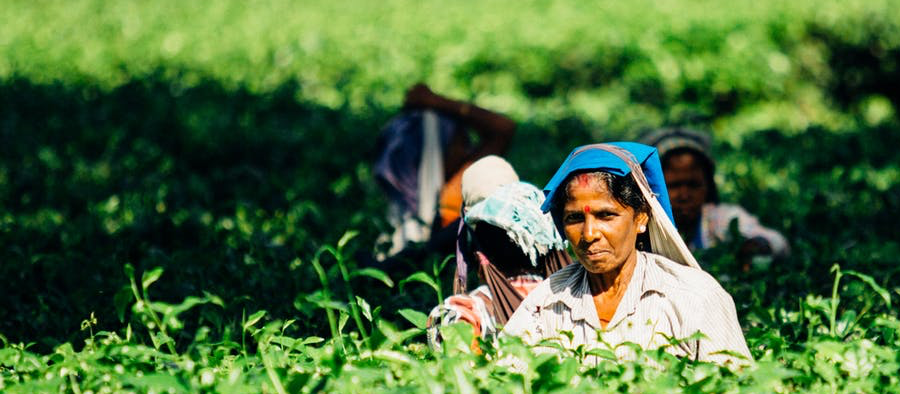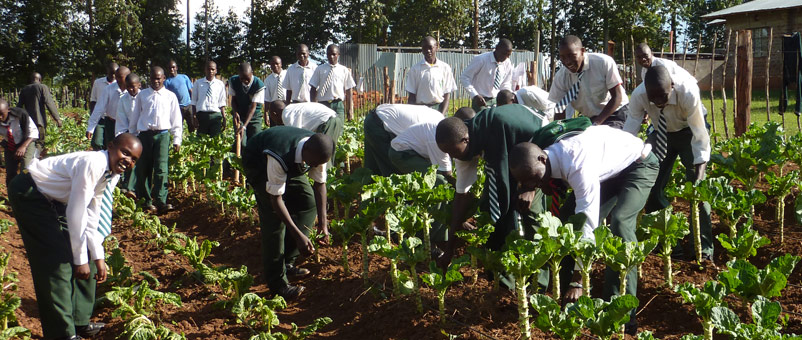When thinking of urgent youth priorities, crop breeding may not come quickly to mind. But better crops are central to the welfare of youth – particularly in low-and middle-income countries across Africa, Asia and Latin America. In fact, their futures depend on the rapid development of improved crop varieties.
As the world marks International Youth Day, learn how breeding is shaping the futures of young adults and children. CGIAR’s Accelerated Breeding Initiative and partners are improving their breeding programs to benefit communities, including youths, in countries across the Global South.
Delivering nutrition
In regions where malnutrition and food insecurity continue to be pressing concerns, improved and modernised crop breeding is playing a pivotal role in delivering nutrition to youths.
For instance, CGIAR’s efforts have led to the development of vitamin A-enriched orange-fleshed sweet potatoes. More than 140 million preschool-aged children – primarily in Africa and Asia – suffer from vitamin A deficiency, which weakens their immune system and robs approximately 500,000 children of their sight each year.
And across Asia, where rice is a dietary staple, rice varieties have been developed with enhanced zinc and iron content. Zinc deficiency is prevalent in the region, leading to compromised immune systems and stunted growth in children. By developing high-zinc rice, breeders are directly combating the hidden hunger crisis plaguing countless children.
In 2022 alone, 105 varieties biofortified to reduce malnutrition among youths and children were released. This work has proven that conventional crop breeding can increase nutrient levels without compromising yield and other key traits important to farmers. Developing these nutrient-dense varieties means healthier youths across the world.
Reducing drudgery and saving time
Farming and home processing work often fall on youth and women. These can be painstaking tasks. However, new crop varieties can help decrease drudgery by targeting varieties that require less weeding or can be more readily threshed, processed and cooked. Basing breeding decisions on high quality market intelligence ensures breeders deliver varieties with the greatest positive impact, including for women and youth.
For example, in Nigeria, cassava breeders used the G+ Customer Profile tool, which helps breeders understand the roles of women, youths and children in growing and processing crops. This drove them to develop cassava varieties that peel and cook easily. For Nigeria’s rural regions, this alleviated some drudgery from household chores and crop production.
Another example is dry direct seeded rice, which can reduce the impacts of drudgery, stress and health hazards for youth and women. The resulting time savings and quality of life improvements mean youth can potentially focus more on their education and development or higher paying activities.
Boosting livelihoods
With climate and environmental challenges attacking crop production, breeders are developing climate-resilient, high-yielding varieties to ensure smallholder farmers do not suffer poor harvests. For example, in Ghana, climate-smart maize varieties are boosting yields for farmers by up to 62 per cent. With this extra income, families can reprioritise spending toward school, child development and health care.
CGIAR partners released 234 climate-resilient varieties in 2022 alone, including bananas, legumes and maize that can withstand heat, drought, pests or other climate-related threats. They are poised to ensure farming families can secure their livelihoods through more robust harvests.
Creating youth employment along the value chain
Breeding for traits valued by alternative or emerging markets can also create employment opportunities outside of the farm.
For example, breeders in Malawi developed and released varieties that can be used for orange-fleshed sweet potato purée – a key ingredient in baked and fried foods in Kenya, Malawi and Uganda. The varieties feature improved yields, taste and vitamin A content – and better processing qualities needed to make purée. Analysts expect this expansion of purée production to create employment opportunities for youth, as bakeries and other businesses see increased profits.
Such market-demanded varieties will lead to better suited products for local value chains, creating new entrepreneurial opportunities and employment, including for young adults.
Inspiring the next generation of farmers… or breeders
Agriculture and the broader food system are the largest employers of young people in the Global South. Young minds hold the key to rethinking agriculture. Yet, younger generations often fail to see farming as a promising future. However, as breeding programs boost harvests and livelihoods, youths may be enticed to stay on-farm and contribute to the vital roles of smallholder families.
In addition, breeding science itself continually needs fresh minds. CGIAR and partners have plenty of talented breeders and leaders – including many women – with rural backgrounds in Africa, Asia and Latin America. They can inspire youth to seek out their own scientific and leadership roles.
The future for the youth!
CGIAR and partners are ensuring all voices are involved in designing the next generations of crop varieties – including youth and women. As these improved crops reach smallholder farmers and communities, we can expect healthier, wealthier and happier generations of youth – with ever more opportunities. This means a better future for all of us.
Photo: C. Schubert (CCAFS)
This blog was originally published on the CGIAR blog but was edited slightly to adhere to Farming First’s editorial guidelines.



